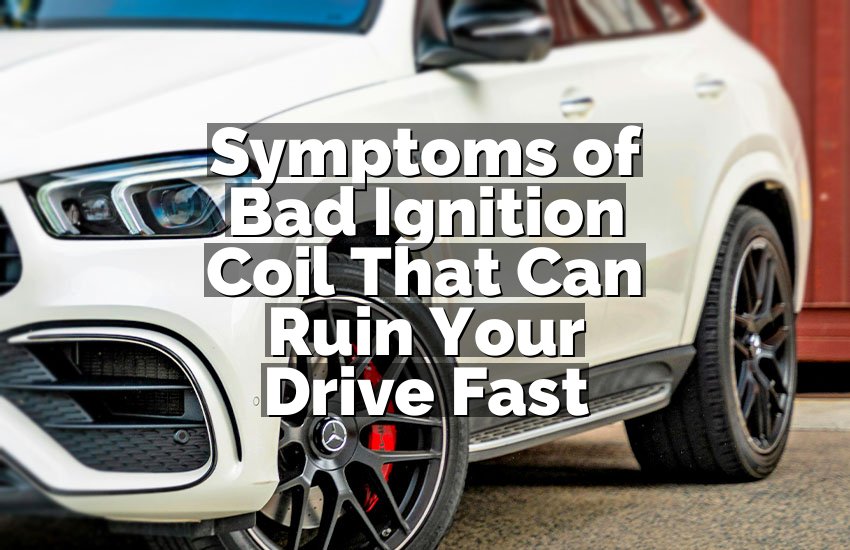Have you ever rushed to drive, but your steering wheel got stuck? It feels scary and confusing. The truth is, unlocking it is simple if you know what to do. In this article, you will learn exactly how to unlock a locked steering wheel in clear and easy steps. You will be able to handle it safely, without stress.
Turn the Key Gently While Moving the Wheel
Most steering wheels lock when the car is off and the wheel is turned too far. This is a normal safety feature, but many people panic when it happens. The best thing to do first is to stay calm and avoid forcing the key. Forcing it too hard can break the ignition or damage the lock. Instead, you must use a gentle but steady touch.
Insert your key into the ignition, but do not try to turn it too hard. Now place your other hand on the steering wheel. Slowly turn the wheel left and right. You will feel resistance on one side, but one side will give you more room to move. The trick is to apply light pressure in that direction. Keep holding the wheel in that spot.
As you keep the wheel turned gently, turn the key at the same time. You may need to try this a few times until you find the right balance. When the wheel loosens, the ignition will unlock and the car will start. The whole process is easy once you know how it works. This is usually all you need when the wheel is stuck.
Many drivers make the mistake of pulling too hard on the wheel or twisting the key forcefully. This does not help and only risks damage. The key and lock are delicate parts, and extra pressure often makes the problem worse. A slow and gentle touch is always better. Even if it feels stuck, it is usually a small adjustment that frees it.
If your steering wheel still does not unlock after trying this method, check your key. A worn-out key sometimes causes the ignition to jam. Using a spare key may work better if the original one has worn edges. Old keys can bend or lose shape over time, so testing another key is a smart move before assuming something is broken.
- Insert key gently into ignition
- Hold steering wheel with one hand
- Turn wheel left and right to find free side
- Keep pressure on free side
- Turn key gently while holding wheel
Check the Car Key Condition
A damaged or worn key is one of the most common reasons a steering wheel stays locked. Over time, keys lose their sharp edges, and the ignition may not read them correctly. Even a small bend or crack can cause the key to stick. That is why you must always inspect the key before blaming the wheel or the ignition.
Hold the key in your hand and look closely at the grooves. If the edges are smooth or shiny, the key may be worn down. Compare it to your spare key, if you have one. If the spare looks sharper, try using it instead. A spare key often works right away because it has not been used as much as the main one.
If both keys look worn, you might need to replace them. Most car dealerships or locksmiths can cut a new key from your vehicle’s code. This is often better than copying a worn key, because copies can keep the same flaws. A fresh key cut to the original code will fit more securely and unlock the wheel smoothly.
Sometimes, dirt or debris also collects inside the key grooves. When this happens, the ignition cannot read the pattern well. Cleaning the key gently with rubbing alcohol or soap water can help. Just make sure the key is fully dry before inserting it back into the ignition. This small step often solves the problem without extra work.
If your car uses a key fob or chip key, check the battery too. A weak fob battery may prevent the signal from reaching the ignition system. This is rare, but some modern cars use an electronic lock that depends on the key chip. Replacing the small battery inside the fob may fix the problem without needing repairs.
- Inspect key edges for wear or damage
- Try spare key if original seems worn
- Replace key if grooves are smooth or bent
- Clean key with rubbing alcohol for dirt buildup
- Check fob battery if car uses chip key
Inspect the Ignition Cylinder
If the key looks fine, but the steering wheel stays locked, the problem may be inside the ignition cylinder. The cylinder has small pins and springs that line up with the key grooves. If these pins stick or wear out, the ignition will not turn. This is why cleaning and maintaining the ignition is important.
Dirt, dust, or small metal shavings can build up inside the ignition over time. When this happens, the key may go in but not turn smoothly. You can try spraying a small amount of electrical contact cleaner or WD-40 into the ignition slot. After that, insert the key several times to loosen any dirt. This often frees stuck pins.
If the ignition is badly worn, you may feel rough grinding when turning the key. Sometimes the key will turn halfway but get stuck before the car starts. In that case, forcing it can break the cylinder completely. Once the cylinder breaks, the car will not start at all, and you may need a full replacement from a mechanic.
Another common issue is a jammed spring inside the ignition. These small parts lose tension over time, especially in older cars. When this happens, the cylinder does not lock and unlock properly. Only a skilled mechanic can replace these tiny parts safely. If you suspect this, it is better not to risk more damage by forcing the key.
You can also check whether the ignition feels loose or wobbly when the key is inside. A wobbly cylinder may mean the housing is cracked. This usually requires professional repair. However, catching it early may save you from a sudden breakdown. That is why testing the ignition with a gentle touch is important before driving long trips.
- Spray cleaner inside ignition for dirt buildup
- Insert and remove key several times after cleaning
- Avoid forcing key if cylinder feels rough
- Watch for grinding or halfway turn issues
- Seek mechanic help if ignition feels wobbly or loose
Release Pressure from the Wheel
Sometimes the steering wheel itself holds pressure on the ignition lock. This happens when you turn the wheel too far before removing the key. The lock pin gets stuck against the steering mechanism. Luckily, this is easy to fix by adjusting the wheel position before turning the key again.
Sit in the driver’s seat and place your hands firmly on the wheel. Try moving it left and right slowly. You will notice that one side feels tighter than the other. This tighter side is where the lock pin is jammed. The goal is to take pressure off the pin by moving the wheel toward the looser side.
As you apply slight pressure in that direction, try turning the ignition key again. The moment the pressure lifts, the lock pin will slide back, and the wheel will release. This often works in seconds if done gently. Many drivers get frustrated because they pull on the wheel too hard instead of applying small adjustments.
It is also important to remember that steering wheels are designed to lock for safety reasons. This prevents the car from being moved without the key. So, when you release the pressure correctly, you are simply resetting the system. Once the lock pin is free, you should be able to turn the ignition normally without resistance.
If the wheel feels stiff even after several tries, double-check that your key is fully inserted. Sometimes, the key may not go in all the way due to dirt or a bent edge. A half-inserted key cannot unlock the pin. Cleaning the key and reinserting it often helps in such cases. Always start with the easiest checks first.
- Hold steering wheel with both hands
- Move wheel left and right to find looser side
- Apply light pressure toward looser side
- Turn key gently while holding wheel steady
- Make sure key is fully inserted before trying
Use Lubrication to Loosen Stuck Parts
If the wheel or ignition still feels stuck after trying gentle pressure, lubrication may help. Over time, moving parts inside the ignition and lock mechanism dry out. Without enough oil or grease, they stick together and jam. A small amount of the right lubricant can make a big difference.
Choose a spray lubricant like WD-40 or a silicone-based oil. Do not use thick grease because it can collect dirt and make things worse. Spray a short burst into the ignition slot. Then insert and remove the key several times to spread the oil across the pins. This helps the parts move smoothly again.
You can also spray lubricant on the edges of the steering column where the wheel connects. Sometimes friction builds up there, which adds pressure to the lock system. A light coating loosens the mechanism. Always wipe away any extra oil so it does not drip inside the car. Keeping the parts clean is just as important as oiling them.
If lubrication solves the problem, it is still smart to schedule regular maintenance. A mechanic can check whether the parts are wearing out or just dry. Lubrication is only a short-term fix if deeper damage exists. But for most drivers, it works well enough to get the wheel moving again without stress.
Avoid spraying too much oil at once. Too much liquid can damage electronic parts near the ignition. Always use a small amount, test, and repeat only if needed. It is safer to go slow and careful rather than risk a mess. A little bit of lubricant often does the job perfectly.
- Use WD-40 or silicone spray, not thick grease
- Spray small burst into ignition slot
- Insert and remove key to spread oil
- Apply light coating near steering column edges
- Wipe extra oil to keep parts clean
Call a Professional When Nothing Works
If all the methods fail, the issue may be more serious. The lock system inside modern cars has many small parts that can wear out or break. At this point, forcing the wheel or key could cause expensive damage. Instead, the best choice is to call a trusted professional for help.
A certified mechanic or locksmith can check whether the ignition, steering lock, or electronic system has failed. They have the right tools to open the lock without breaking it. In some cases, they may replace the ignition cylinder or reprogram the key. This is safer and cheaper than damaging the system by trying too hard.
Roadside assistance is another good option if you are stuck away from home. Many auto clubs or insurance companies offer lockout services. They can unlock the wheel quickly and help you get back on the road. This saves you from towing costs and gives peace of mind when traveling.
- Call mechanic if ignition or lock system is damaged
- Locksmith can replace or repair ignition cylinder
- Roadside assistance helps if stuck away from home
- Preventive repairs save money long-term
- Avoid forcing key or wheel if unsure
Final Thoughts
A locked steering wheel can scare you, but the fix is often simple. With calm hands and the right method, you can unlock it safely. From checking the key to adjusting the wheel, every action matters. When nothing works, a professional can help without damage. Remember, gentle moves are always better than force. Now you know how to unlock a locked steering wheel the easy way.
| Method | What to Do |
|---|---|
| Turn key with wheel | Hold wheel gently, turn key at same time |
| Check car key | Inspect, clean, or try spare |
| Inspect ignition | Clean or repair cylinder |
| Release pressure | Move wheel toward looser side |
| Lubricate parts | Spray WD-40 lightly |
| Call professional | Mechanic or locksmith help |
Frequently Asked Questions (FAQs)
Is it safe to force the steering wheel when it is locked?
No, it is not safe to force the steering wheel. Forcing it can damage the lock pin or break the ignition cylinder. Once these parts break, they are expensive to repair and may leave you stranded. It is always better to apply light pressure, check the key, and follow gentle methods. If it still does not unlock, calling a professional is the safer choice.
Can a worn car key cause the steering wheel to lock?
Yes, a worn key can cause the wheel to stay locked. When the grooves are smooth or bent, the ignition pins do not align. This makes the system jam. A spare key usually works better because it has less wear. If no spare is available, getting a fresh key cut from the original code is the best solution to avoid future problems.
Do I need to replace the ignition cylinder if it jams often?
If the ignition cylinder jams often, replacement may be necessary. Dirt or lack of lubrication can cause minor jams, which cleaning may fix. However, if grinding, wobbling, or halfway turns happen regularly, it means the parts inside are wearing out. In such cases, replacement is the most reliable option to prevent sudden failure on the road.
Is it possible to unlock the steering wheel without the car key?
It is very difficult to unlock the steering wheel without the car key. The system is designed as a theft-prevention feature, so it locks firmly without the right key. Trying to bypass it without tools can cause more damage. A locksmith may be able to unlock it without the key, but for most drivers, having a working key is necessary.
Can lubrication fix a stuck steering wheel permanently?
Lubrication can help, but it is usually not a permanent fix. It reduces friction and helps pins and springs move smoothly again. However, if the parts are already worn or damaged, the problem will return. That is why lubrication should be seen as a temporary solution. For a permanent fix, a mechanic should inspect and replace worn parts.
Do I risk breaking the ignition if I keep turning the key hard?
Yes, turning the key hard can break the ignition. The pins and springs inside the cylinder are delicate. When forced, they can snap or jam worse. This will cost much more to repair than simply using gentle methods. Always turn the key slowly and apply pressure on the wheel at the same time instead of forcing the key.
Is it worth calling roadside assistance for a locked steering wheel?
Yes, it is worth calling roadside assistance if the wheel stays locked and nothing works. Roadside assistance teams are trained to handle such issues safely. They can unlock the wheel, tow your car if needed, or guide you to a mechanic. This saves you time, avoids frustration, and protects your car from unnecessary damage.
Can regular maintenance prevent the steering wheel from locking?
Yes, regular maintenance can prevent many steering wheel lock problems. Cleaning the ignition, keeping keys in good shape, and lubricating moving parts reduce the risk of jams. Mechanics can also inspect the lock system during routine checks. With proper care, the chances of sudden lockups go down, giving you smoother driving and peace of mind every day.


